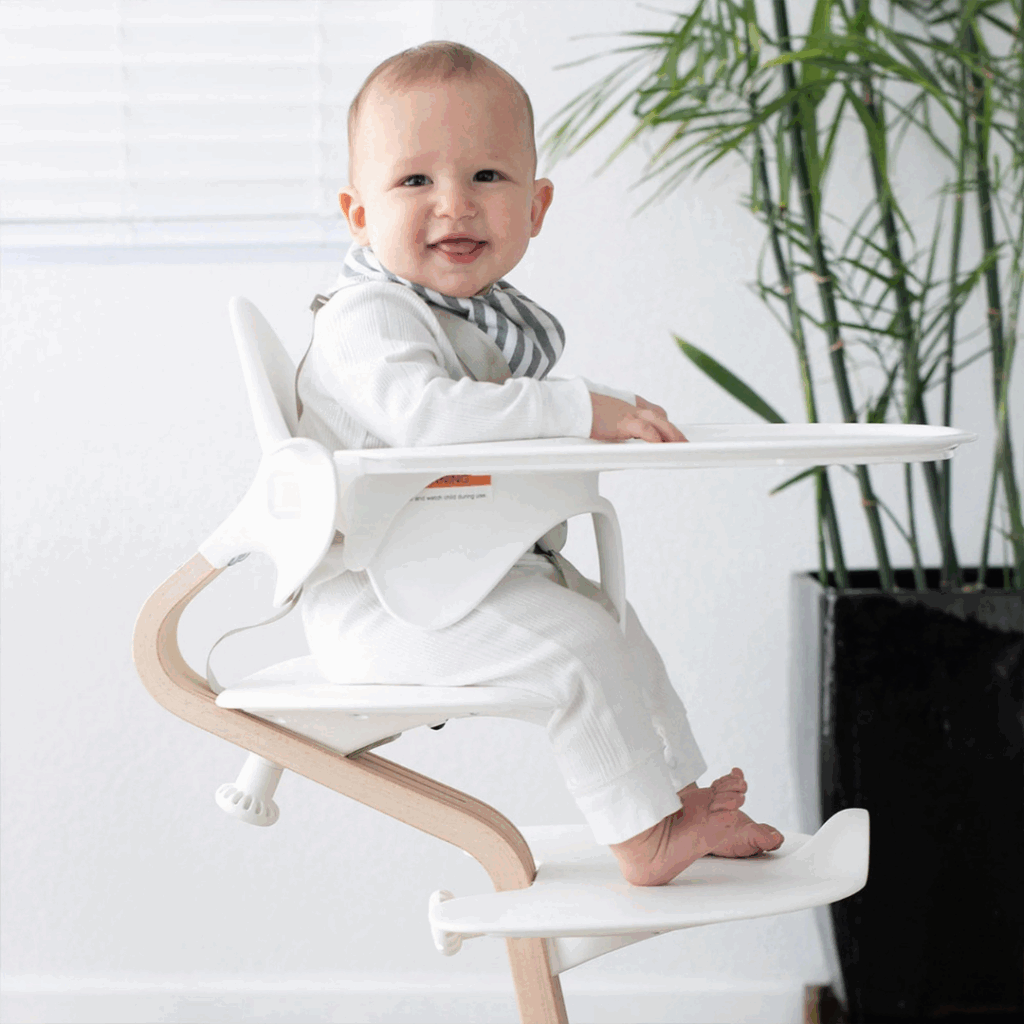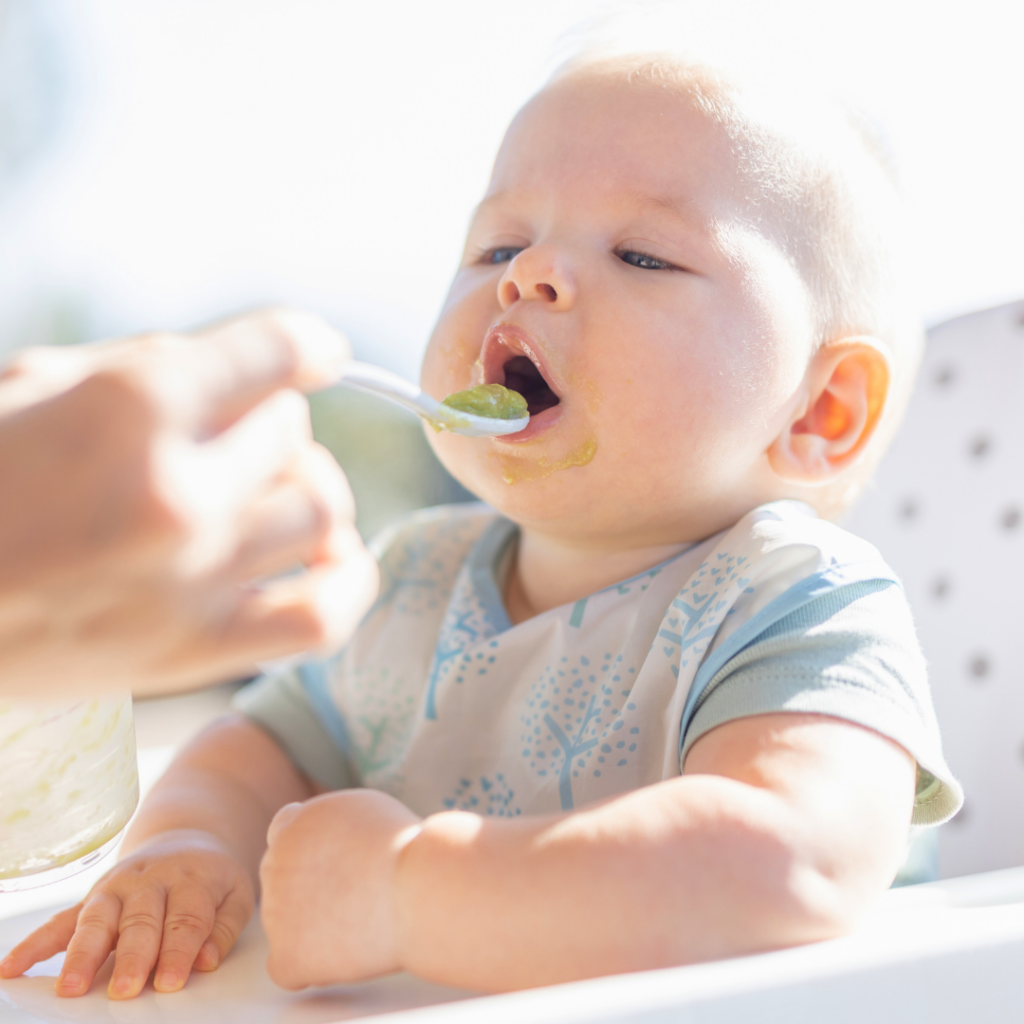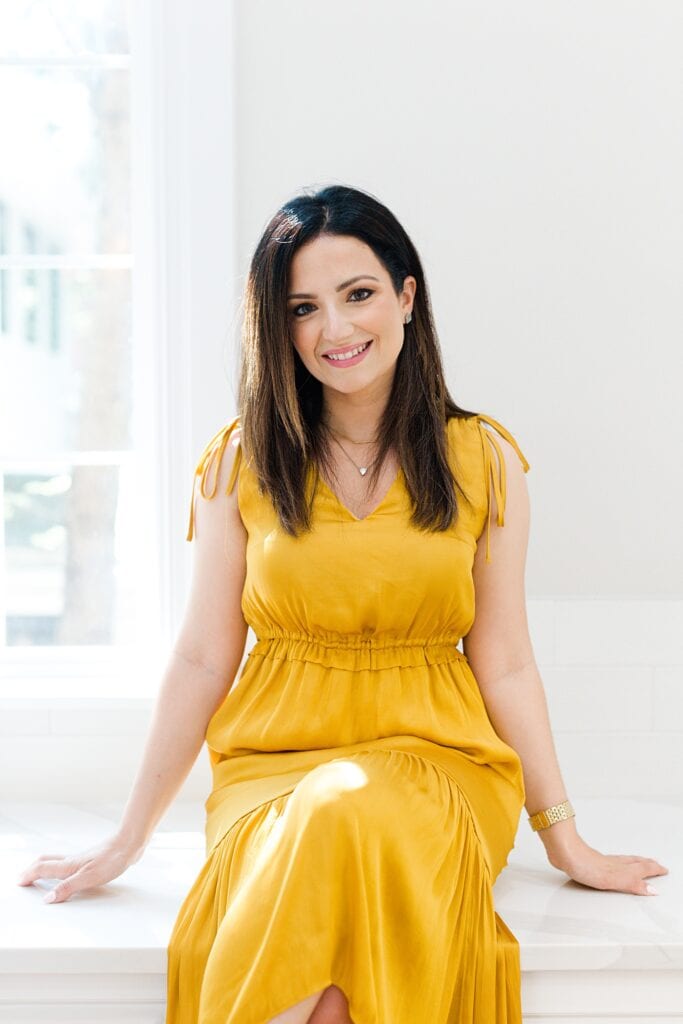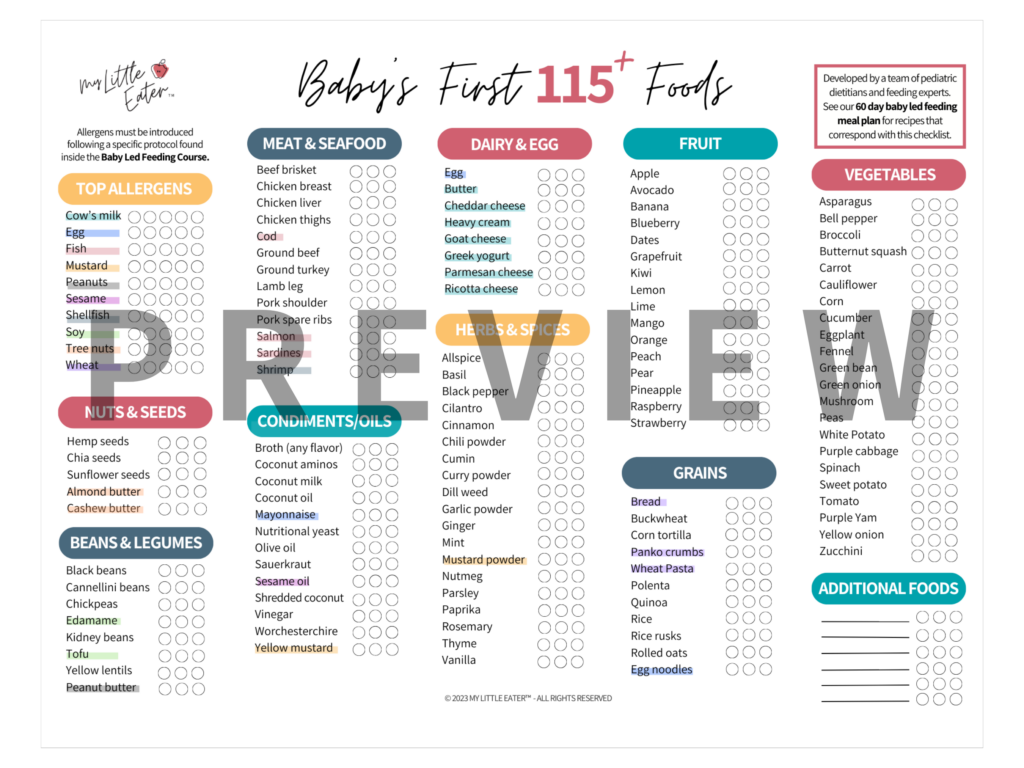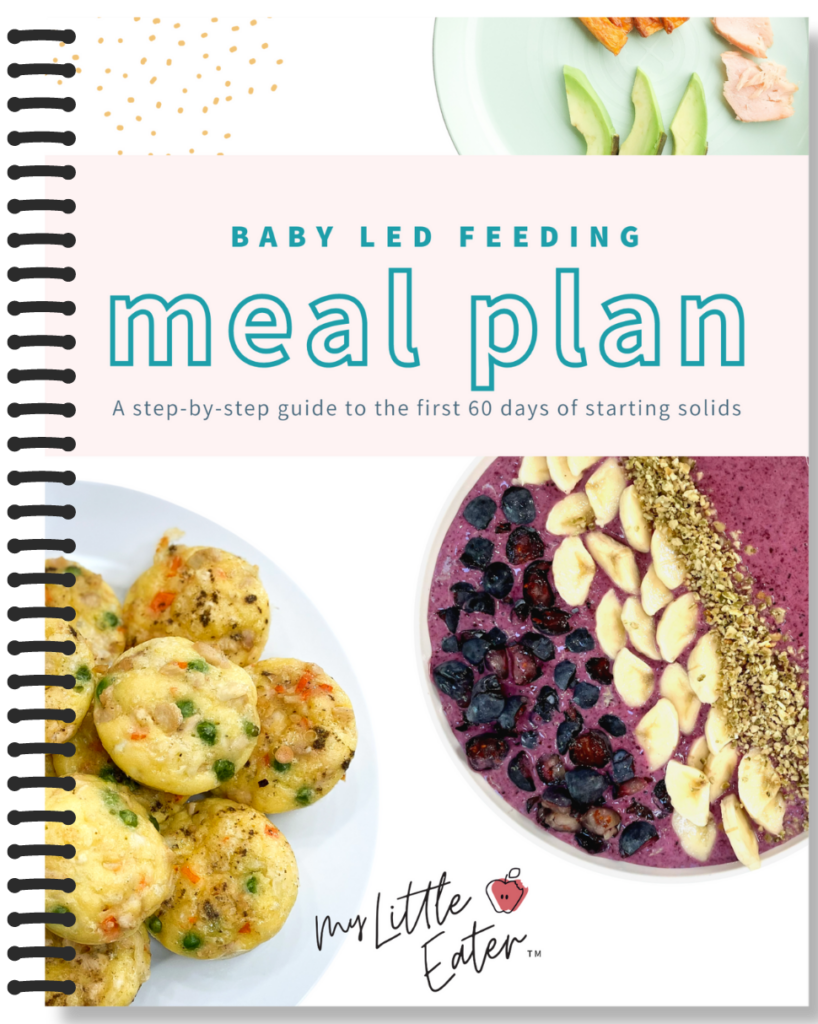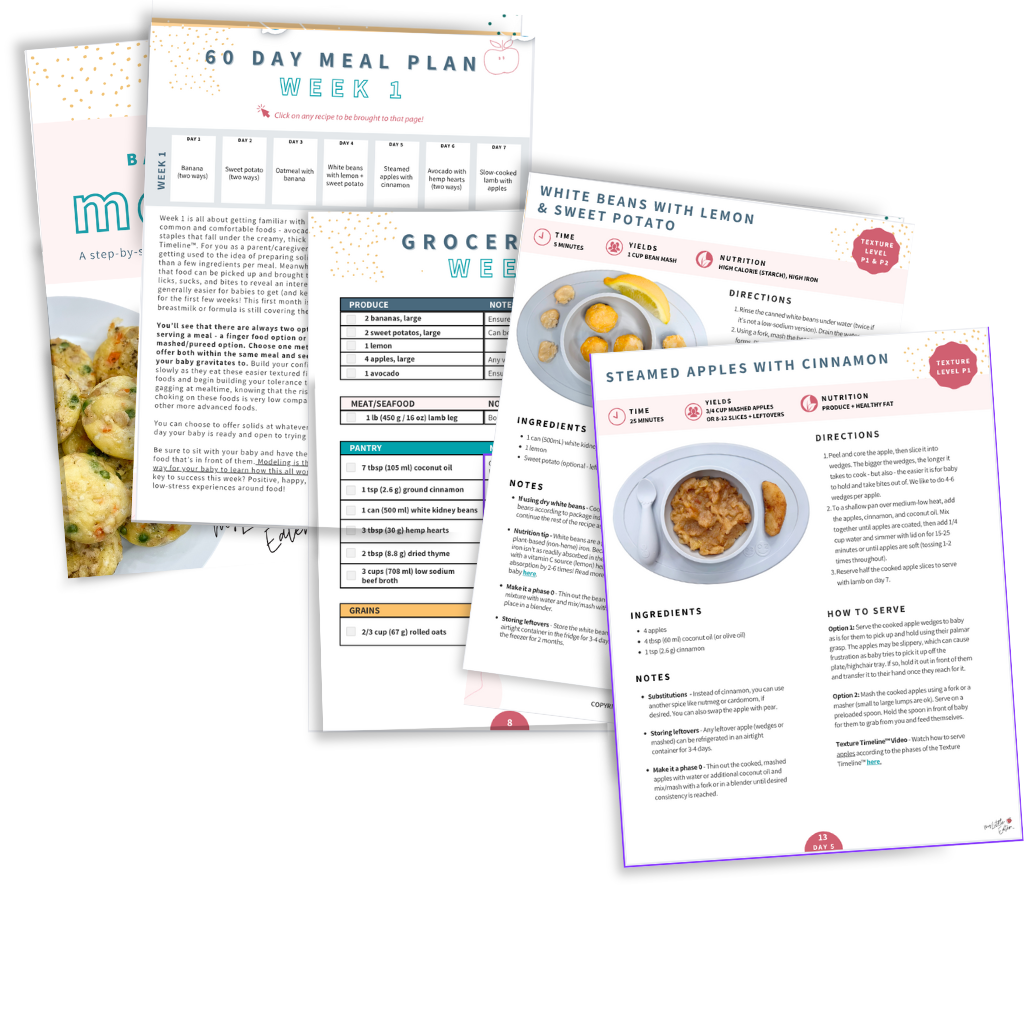This blog was contributed to by Megan Cornell (pediatric occupational therapist). Find more help from Megan at https://www.teacherspayteachers.com/store/making-mealtime-fun
One of many exciting milestones that babies achieve in their first year is the palmar grasp! And believe it or not, this simple hand movement is kind of a big deal! Not only does it help your baby play and explore the world around them, but it’s also the most essential skill needed for self-feeding.
If you’re getting ready to start solids, you’re probably wondering: How will my baby actually pick up food? That’s where the palmar grasp comes in. In this blog, we’ll break down when the palmar grasp develops, how to support it, and why it’s a key for a successful baby-led weaning journey.
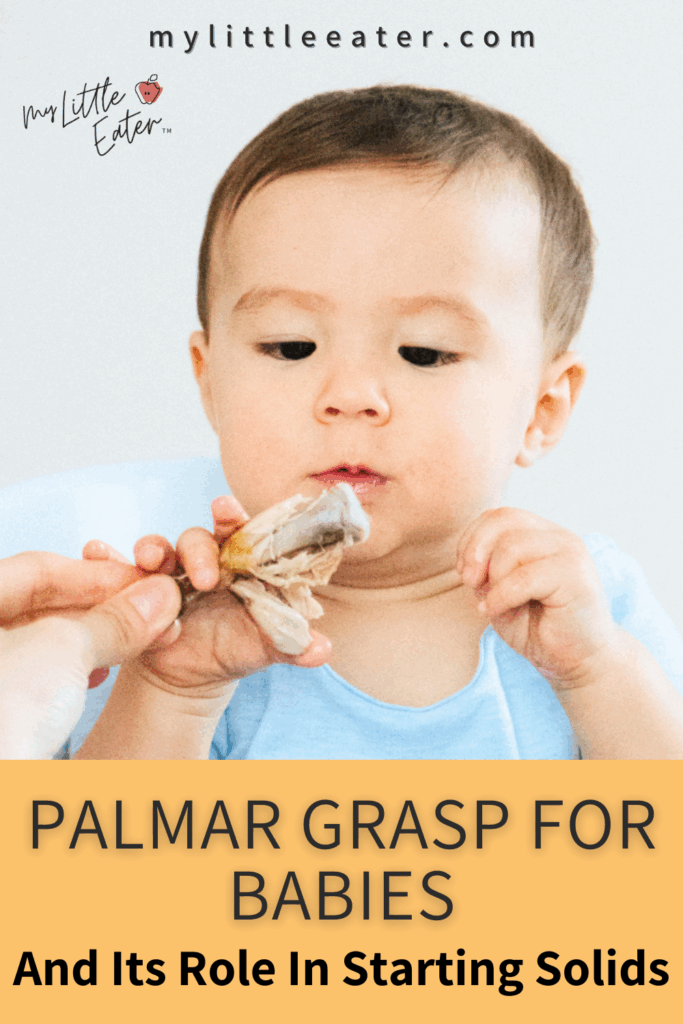
Table of Contents
If you’re just getting started with solids, or maybe you’ve started but feel stuck or would like some guidance to make things easier – sign up for our free workshop!
This is for parents who are worried about the safety of finger foods, can’t stand the thought of their baby gagging or taking big bites, and are so concerned with choking that it’s preventing them from moving on from purees.
During the workshop, we’ll walk you through our signature Texture Timeline™ which shows you how to move from purees to finger foods in a way that works for both you and your baby.

Key takeaways
- Palmar grasp is a foundational fine motor skill that plays a key role in self-feeding.
- Palmar grasp develops in stages: crude-ulnar palmar grasp, palmar grasp, and radial palmar grasp.
- Palmar grasp typically emerges between 4-6 months of age.
- There are simple, play-based activities you can do to help your baby practice and refine their palmar grasp.
What is the palmar grasp?
Simply put, the palmar grasp is a fine motor skill that allows babies to intentionally pick up and hold large objects. It involves holding an object in the palm of their hand and curling their fingers around the object for support (1).
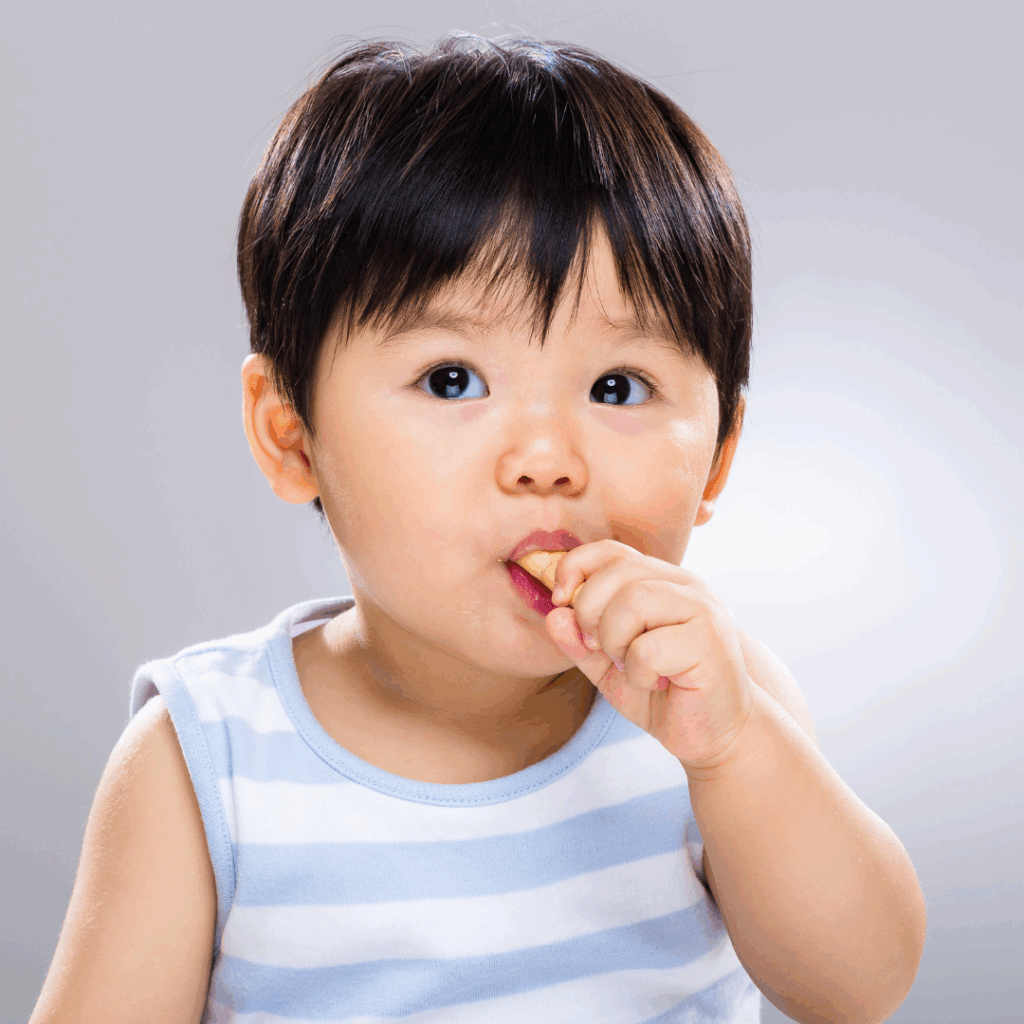
How does the palmar grasp differ from the grasp reflex?
Have you ever touched your baby’s hand only to have them immediately grab hold of your finger? It’s the cutest thing in the world! This is an automatic, involuntary response that babies are born with called the grasp reflex (2). This reflex creates a strong grip, however unlike the palmar grasp, babies can’t use it to intentionally pick up or hold onto objects.
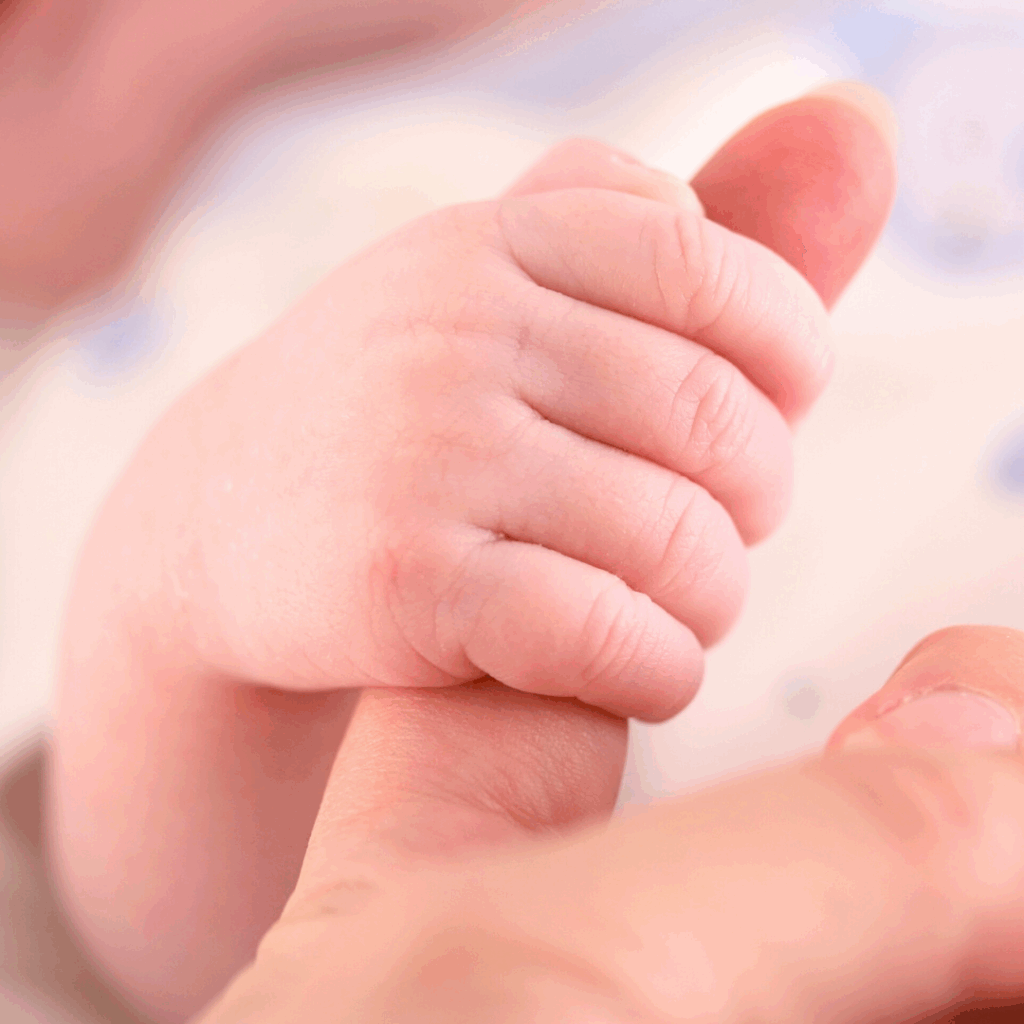
When the grasp reflex disappears (usually by 5-6 months of age), it’s replaced with the palmar grasp which allows babies to intentionally pick up and hold onto objects until they decide to let go (3).
At what age does a baby’s palmar grasp develop?
Between 4-6 months of age.
Like with any new skill, the palmar grasp isn’t mastered overnight. It typically begins to develop around 4 months of age and progresses through a few stages before the perfect palmar grasp around 6 months (4).
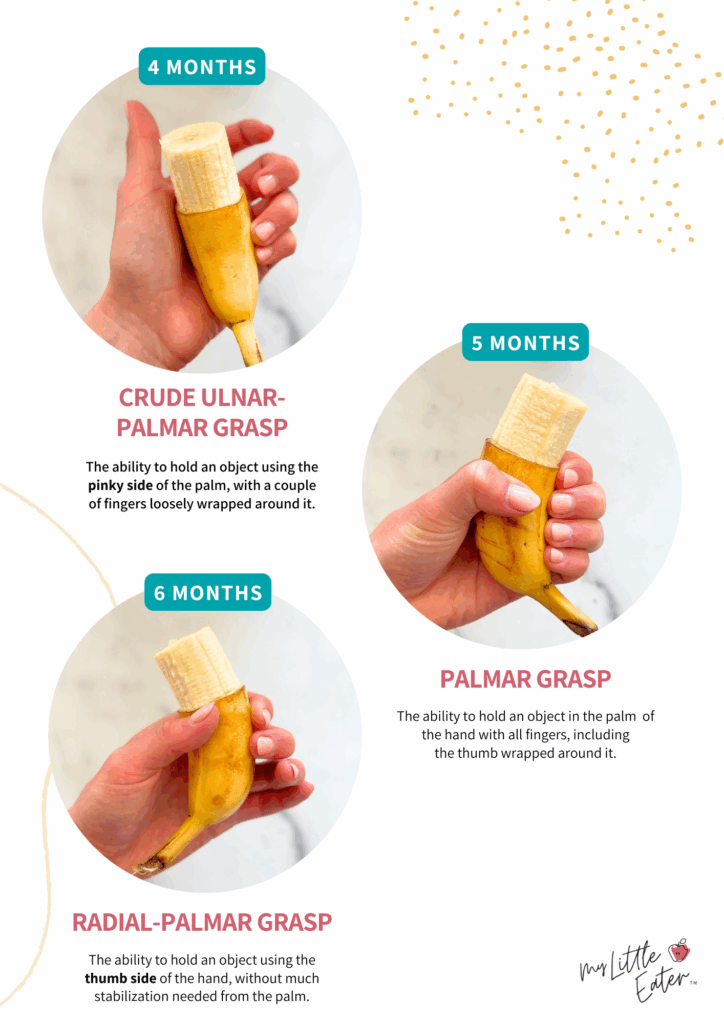
Stages of the palmar grasp
Crude ulnar-palmar grasp (4 months) (4,5):
This is the beginning stage of palmar grasp which will allow your baby to begin grabbing hold of objects intentionally for the first time. Such an exciting milestone!
With the crude ulnar palmar grasp, babies can hold onto an object using the pinky side of their palm, with a couple of fingers loosely wrapped around it.
Babies don’t yet have the support of their thumb at this stage, so their grip will not be very strong. In other words, you can expect lots of dropping!
Palmar grasp (5 months) (4,5):
At this stage, the whole hand becomes involved. With the palmar grasp, babies can hold onto an object in the center of their palm with all of their fingers around it, including their thumb.
Radial-palmar grasp (6 months) (4,5):
As time goes on, your baby will develop the ability to pick up large items with more precision using the radial-palmar grasp.
This grasp allows babies to pick up and hold items in their hand using the thumb side of their hand, with less stabilization needed from the palm.
Palmar grasp and baby led weaning
Now that we’ve covered how the palmar grasp progresses from one stage to the next, let’s talk about what this means at the table — because those little hands are about to dive into food, and how they grab it matters!
Babies use their palmar grasp to explore the world around them. It allows them to do things like grab and hold toys while playing – and our favorite part – it’s what gives them the ability to self feed, which is literally necessary for starting solids with baby led weaning!
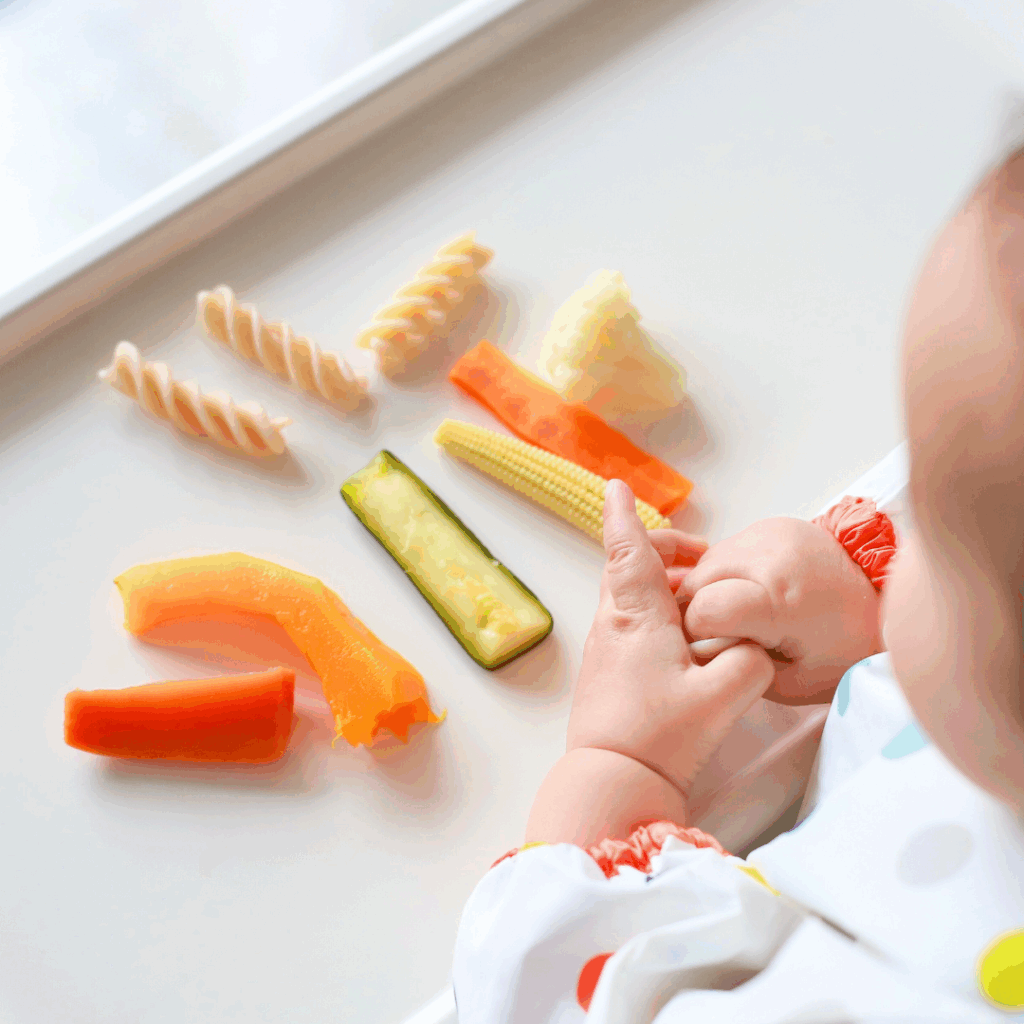
Is palmar grasp required before starting solids?
Not necessarily. If you’re planning to spoon feed your baby entirely, then the palmar grasp isn’t required to start solids, since your baby won’t be using their hands to bring food to their mouth.
That being said, we always recommend encouraging self-feeding with either a spoon or finger food from day 1 of starting solids. And for that? Yes – the palmar grasp is required to start solids.
Note: Starting solids is only safe and effective when all the developmental signs of readiness are present.
How to serve food for palmar grasp
It’s most important to offer foods that are large enough and long enough when your baby has their palmar grasp and doing baby led weaning. As a general rule, we recommend that parents aim to offer pieces of food that are about the width of two fingers put together, and the length of an index finger, or long enough that the food sticks out of baby’s hand on either side when they’re holding it. That’s because babies this age don’t have hand manipulation skills yet, so if a piece is too short, it will be “hiding” in their hand and won’t be able to access any of it.
While it’s easy to get stuck in a rut of offering stick or finger shaped foods to your baby — that’s just one of your options!
Babies can use their palmar grasp to pick up and hold foods that are:
- Stick shaped: about 1-1 ½ inches wide and 2-3 inches long.
- Wedge shaped: about 1- 1 ½ inches wide and 2-3 inches long.
- Disc or sphere shaped: about 1 ½-2 inches in diameter
- Whole foods: At least 1 ½-2 inches wide/long (or, you can go really big and let your baby hold the food with both hands).
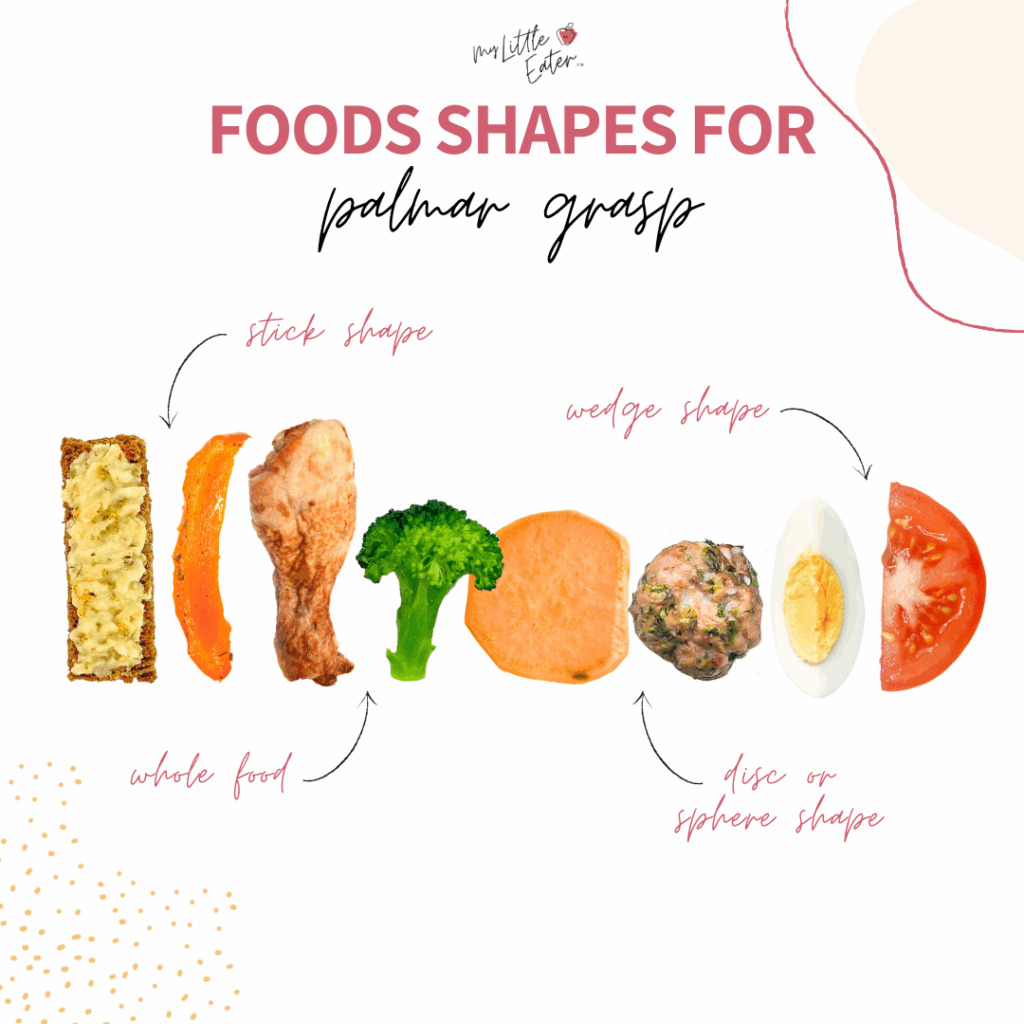
Can a baby use palmar grasp for spoons?
Definitely! Even if you’re starting with purées, the palmar grasp is still integral to starting solids when following our baby led feeding approach, as it allows babies to hold onto utensils to self-feed from a spoon! The ability for a baby to grasp and hold a short, chunky spoon using their whole hand happens around 6 months of age (that’s the palmar grasp in action!). See our favorite spoons to support this developmental milestone here.

Are large pieces of food safe for babies?
If the idea of offering large pieces of food to your baby feels scary to you, you’re not alone! Contrary to popular belief, soft, large pieces can actually be safer than small pieces.
When food is big enough, your baby can gum and explore it at their own pace, deciding how much to bite off. Larger pieces are also easier to control and keep track of in the mouth, making it easier for babies to move, gag and spit out the pieces of food if needed.

For more information, check out our blog: Why Bigger Is Better (And Safer) For Baby Led Weaning
Tips to help babies develop their palmar grasp
While palmar grasp generally develops on its own, there are simple, play-based activities you can do to help your baby practice and refine their new skill.

Tummy time for grasp development
First and foremost if your baby is having a hard time mastering their palmar grasp, it is important to focus on a foundational activity of incorporating more tummy time throughout their day. This is because proximal stability leads to distal mobility. In other words, babies need to have good core strength to feel balanced and supported so that they are free to move their extremities and grasp objects. While your baby is in tummy time, you can encourage even more development of core and upper extremity strength by providing them with a water mat or textured sensory toy to reach for and engage with.

Overhead reaching on the back
Another great activity to help develop grasping skills is placing your baby on their back and having them reach overhead to grasp objects. When baby is laying on their back, they are not having to engage their core muscles and are better able to reach and grab ahold of toys. Using a baby play gym or holding objects such as rattles and pull toys over baby’s head for them to reach for and grasp will help develop their fine motor skills.
Seated play activities
In a seated position, you can offer your baby various toys that will help support the development of palmar grasp such as rattles, oballs, blocks, and stacking cups. One of my personal favorites is the baby tissue box toy which works on grasp and release. If your baby is unable to sit independently, prop a pillow or cushion behind them to offer more support so they are better able to use their arms for reaching and grabbing.

Tug-of-war for hand strength
As a final activity to promote palmar grasp and increased hand strength, you can play a little game of tug-of-war with your baby. To do this, grab one of your child’s favorite baby blankets to play with. With your baby in a seated position and a large cushion or pillow behind them for safety, have your child grab onto the blanket then gently tug the blanket away from them. Applying this increased force will help to strengthen baby’s muscles in their hands to allow for improved grasp.

What if my baby skips the palmar grasp?
If your baby is over 6 months old and you’ve been doing daily activities to encourage palmar grasp development (such as those described above) for 3-4 weeks without noticeable progress, it may be time to seek the advice of a medical professional. A pediatric occupational therapist (OT) can assess your baby’s fine motor skills and provide individualized support if needed.
What to expect next?
Your little one is now picking up foods with their palmar grasp with ease and eating like a pro (yay!). What’s next?
Gradually, your baby will start to develop skills allowing them to pick up smaller objects and pieces of food. Here’s a preview of what’s to come:

- Raking grasp: Around the 8 month mark, your baby may start to use all of their fingers to drag or “rake” smaller pieces of food towards them (4,5).
- Radial digital grasp: At the same time as the raking grasp starts to emerge (around 8 months) you may also notice your baby may start to hold objects between their thumb and their index and middle finger, almost like a little crab claw. This is called a radial digital grasp (4,5).
- Pincer grasp: This grasp develops between 9-12 months of age, allowing your baby to pick up small objects and pieces of food between their thumb and forefinger with precision. In the beginning, your baby will use the pads of their fingers to pick up the object (inferior pincer grasp). But, with more time and practice, they will begin to use the tips of their fingers (superior pincer grasp) (5).
Read more about the development of this skill in our blog: when do babies develop pincer grasp & how to help them practice.

The palmar grasp is an exciting milestone in your baby’s journey toward solids and self-feeding. As your little one works on mastering this new skill, try to embrace every grasp, drop, and mess along the way—it’s all part of the process of raising a confident, adventurous eater!
If you’re just getting started with solids, or maybe you’ve started but feel stuck or would like some guidance to make things easier – sign up for our free workshop!
This is for parents who are worried about the safety of finger foods, can’t stand the thought of their baby gagging or taking big bites, and are so concerned with choking that it’s preventing them from moving on from purees.
During the workshop, we’ll walk you through our signature Texture Timeline™ which shows you how to move from purees to finger foods in a way that works for both you and your baby.

Pin to save for later!
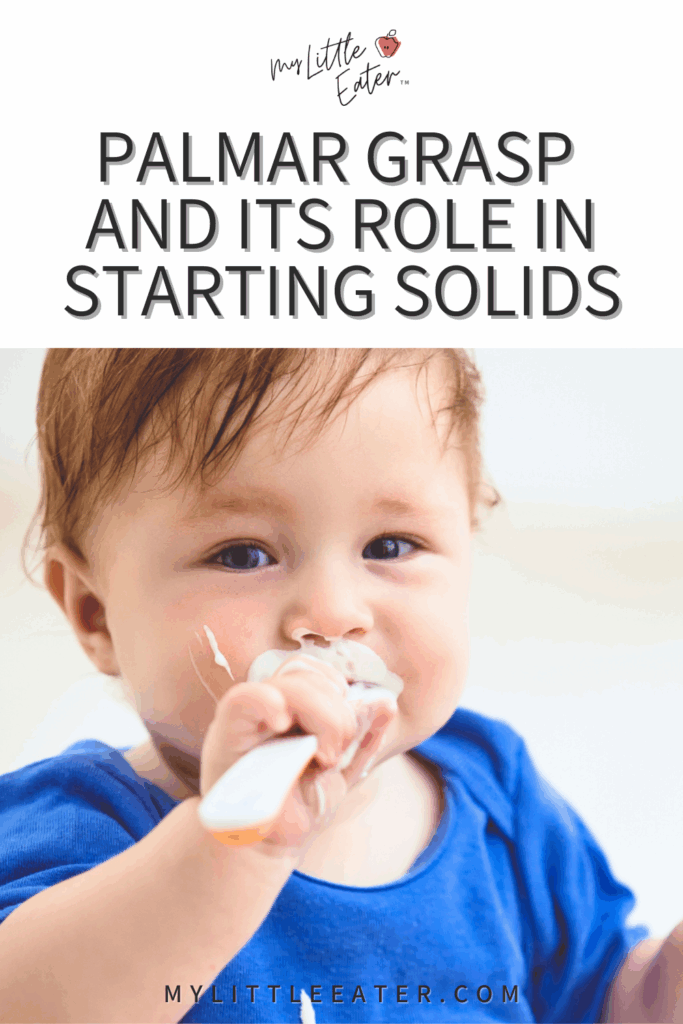
References
- Hadders-Algra M. (2018). Early human motor development: From variation to the ability to vary and adapt. Neuroscience and biobehavioral reviews, 90, 411–427. https://doi.org/10.1016/j.neubiorev.2018.05.009
- Falkson, S. R., & Bordoni, B. (2025). Grasp Reflex. In StatPearls. StatPearls Publishing.
- American Academy of Pediatrics. (2022, March 8). Newborn reflexes. HealthyChildren.org. https://www.healthychildren.org/English/ages-stages/baby/Pages/newborn-reflexes.aspx
- Wood, V. (2023, August 1). Grasp patterns. The OT Toolbox. https://www.theottoolbox.com/grasp-patterns/
- Greutman, H. (2023, July 30). Typical pencil grasp development for writing. Growing Hands-On Kids. https://www.growinghandsonkids.com/pencil-grasp-development-for-writing.html

Edwena Kennedy, RD
Founder and lead Registered Pediatric Dietitian at My Little Eater Inc., creator of The Texture Timeline™, and mom of two picky-turned-adventurous eaters.

Edwena Kennedy, RD
Founder and lead Registered Pediatric Dietitian at My Little Eater Inc., creator of The Texture Timeline™, and mom of two picky-turned-adventurous eaters.

Megan Cornell, OT
Megan Cornell is a pediatric OT, author, and picky eating specialist who loves helping children and families learn to make mealtime fun.

Megan Cornell, OT
Megan Cornell is a pediatric OT, author, and picky eating specialist who loves helping children and families learn to make mealtime fun.
